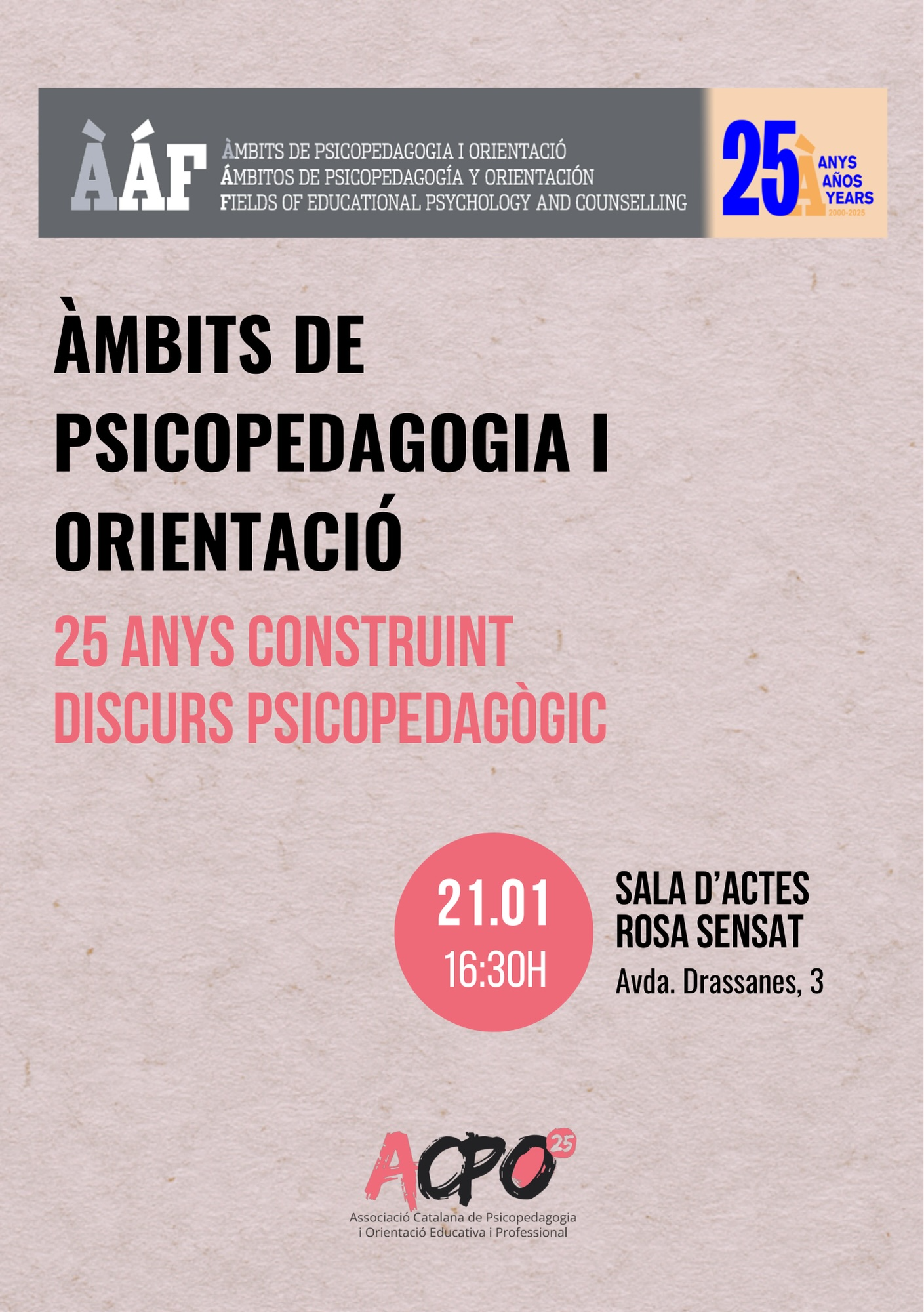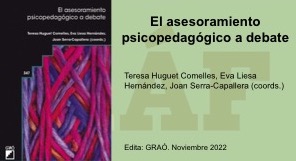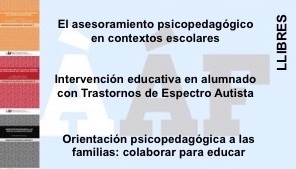Trastorn per Dèficit d'Atenció i/o Hiperactivitat (TDAH)
Resum
El Trastorn d'Atenció i / o hiperactivitat és sens dubte el trastorn més comentat i estudiat en els últims anys que impliqui la comunitat pedagògica, mèdica, psicològica, psiquiàtrica i neuropediàtrica al mateix temps. El fet que sigui un dels trastorns més freqüents (un 5% de mitjana segons les sèries) causant de dificultats en l'aprenentatge i finalment de fracàs escolar fa que haguem de aprofundir en el seu coneixement.
L'article pretén ser una breu posada al dia del TDAH analitzant els seus símptomes, el diagnòstic diferencial i el diagnòstic definitiu, les bases neurobiològiques, els trastorns comòrbids associats i el tractament actual.
Referències
CHRISTAKIS, D.A. et al. (2004): “Early Televisions Exposure and Subsequent Attentional Problems in Children”. Pediatrics. Vol. 113, nº 4, pp 708-713.
GREYDANUS, D.E. (2003): Behavioral Pediatrics, Part II. The Pediatric Clinics of North America.
KAHN R.S. et al. (2003): “Role of Dopamine Transporter Genotype and maternal prenatal smoking in childhood hyperactive-impulsive, inattentive, and oppositional behaviors”. The Journal of Pediatrics. July 2003, pp. 104-110.
KIRBY, K. et al. (2002): “Attention-deficit/hyperactive disorder: a therapeutic update”. Current Opinion in Pediatrics , nº 14, pp. 236-246.
KONOFAL, E. Et al. (2004): “Low iron stores may contribute to ADHD”. Arch. Pediatr. Adolesc. Med. nº 158, pp. 1113-1115.
MEDIAVILLA-GARCIA, C (2003): “Neurobiologia del trastorno de hiperactividad”. Rev. Neurol. nº 36 (6), pp. 555-565.
MILLER, K.J.; CASTELLANOS, F.X. (1999): “Trastornos por déficit de atención/hiperactividad”. Pediatrics in review. Vol. 20, nº 3.
MORGAN, A.M. (1999): “Attention-Deficit/Hyperactivity Disorder”. The Pediatric Clinics of North America.
MTA COOPERATIVE GROUP (1999): “A 14-month randomizad clinical trial of treatment strategies for attention-deficit/hypractivity disorder”. Arch. Gen. Psychiatry, nº56, pp. 1073-1086.
MTA COOPERATIVE GROUP (2004): “National Indtitute of Mental Health Multimodal Treatment Study of ADHD Follow up: 24-month Outcomes of Treatment Srtategies for Attention Deficit/Hyperactivity Disorder”. Pediatrics, Vol. 113, nº. 4 , pp. 754-761.
MTA COOPERATIVE GROUP (2004): “National Institute of Mental Health Multimodal Treatment Study of ADHD Follow-up: Changes in effectiveness and Growth after the end of treatment”. Pediatrics, Vol.113, nº. 4, pp. 762-769.
RAPOPORT, J. L.; ISMOND, D.R.: “DSM-IV Training Guide for Diagnosis of Childhood Disorders”. Chapter 10.
SOWELL, E.R. et al. (2003): “Cortical abnormalities in children and adolescents with attention-deficit hyperactivity disorder”. The Lancet Vol. 362. November 22, 2003.
ZAMETKIN, A.J.; ERNST, M. (1999): ”Problems in the Manegement of Attention-Deficit-Hyperactivity Disorder”. The New England Journal of Medicine, Vol.340.
Descàrregues
Publicades
Número
Secció
Llicència
Els autors/ores conserven els drets d'autor i concedeixen a la revista el dret de primera publicació de l'obra, registrada sota una llicència Creative Commons Reconeixement-NoComercial-Sense Obra Derivada. Aquesta llicència permet la descàrrega de les obres, i que es puguin compartir amb altres sempre que se’n reconegui l'autoria, però no permet que siguin modificades de cap manera, ni ser utilitzades amb finalitat comercial.

















